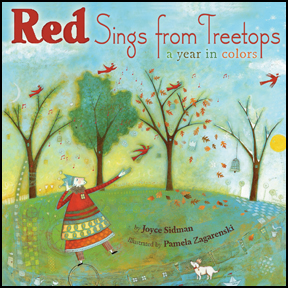BIBLIOGRAPHY
Kerley, Barbara. 2005. WHAT TO DO ABOUT ALICE? Ill by Edwin Fotheringham. New York: Scholastic Press. ISBN 0439922313
PLOT SUMMARY
Even before he became President, Theodore Roosevelt had his hands full with his daughter Alice. She enjoyed exploring the world whether it was through reading books, dancing the turkey trot, or watching sumo wrestling in Japan. Children will enjoy reading about the adventures Alice had throughout her life.
CRITICAL ANALYSIS
WHAT TO DO ABOUT ALICE is an easy read for young students who want to learn more about a President’s daughter. I don’t think this book contains enough facts for a student to read and do a report over, but it is written in a way that will make students want to find out more about her life. The way this book is written will help children see that children of President’s can have fun too. The bibliography has 5 books and a newspaper that were used as references for this book. The illustrations help the reader see how animated and active Alice was. The newspapers shown with real headlines from Alice’s day make the story seem more real. This book is an ALA Notable Book and a Boston Globe-Horn Book Honor Book.
REVIEW EXCERPTS
BOOKLIST Starred Review: “Irrepressible Alice Roosevelt gets a treatment every bit as attractive and exuberant as she was....The large format gives Fotheringham, in his debut, plenty of room for spectacular art.”
KIRKUS Starred Review: "Theodore Roosevelt s irrepressible oldest child receives an appropriately vivacious appreciation in this superb picture book.... Kerley s precise text presents readers with a devilishly smart, strong-willed girl who was determined to live life on her own terms and largely succeeded."
CONNECTIONS
*If students are interested in Alice Roosevelt, encourage them to find more information by using databases.
*Other books about President’s children:
Kerley, Barbara. 2005. WHAT TO DO ABOUT ALICE? Ill by Edwin Fotheringham. New York: Scholastic Press. ISBN 0439922313
PLOT SUMMARY
Even before he became President, Theodore Roosevelt had his hands full with his daughter Alice. She enjoyed exploring the world whether it was through reading books, dancing the turkey trot, or watching sumo wrestling in Japan. Children will enjoy reading about the adventures Alice had throughout her life.
CRITICAL ANALYSIS
WHAT TO DO ABOUT ALICE is an easy read for young students who want to learn more about a President’s daughter. I don’t think this book contains enough facts for a student to read and do a report over, but it is written in a way that will make students want to find out more about her life. The way this book is written will help children see that children of President’s can have fun too. The bibliography has 5 books and a newspaper that were used as references for this book. The illustrations help the reader see how animated and active Alice was. The newspapers shown with real headlines from Alice’s day make the story seem more real. This book is an ALA Notable Book and a Boston Globe-Horn Book Honor Book.
REVIEW EXCERPTS
BOOKLIST Starred Review: “Irrepressible Alice Roosevelt gets a treatment every bit as attractive and exuberant as she was....The large format gives Fotheringham, in his debut, plenty of room for spectacular art.”
KIRKUS Starred Review: "Theodore Roosevelt s irrepressible oldest child receives an appropriately vivacious appreciation in this superb picture book.... Kerley s precise text presents readers with a devilishly smart, strong-willed girl who was determined to live life on her own terms and largely succeeded."
CONNECTIONS
*If students are interested in Alice Roosevelt, encourage them to find more information by using databases.
*Other books about President’s children:
McCullough, Noah. FIRST KIDS: THE TRUE STORIES OF ALL THE PRESIDENTS’ CHILDREN. ISBN: 0545033691





